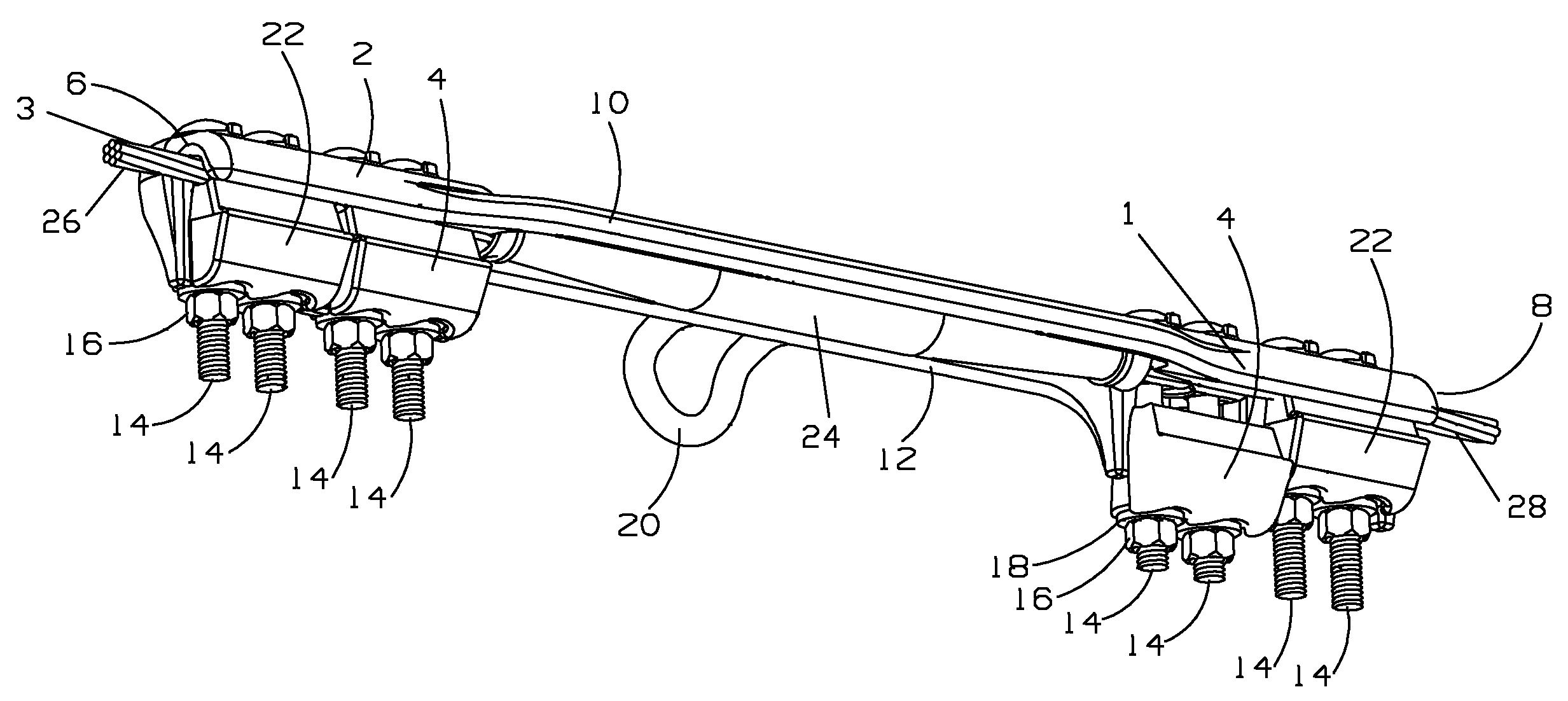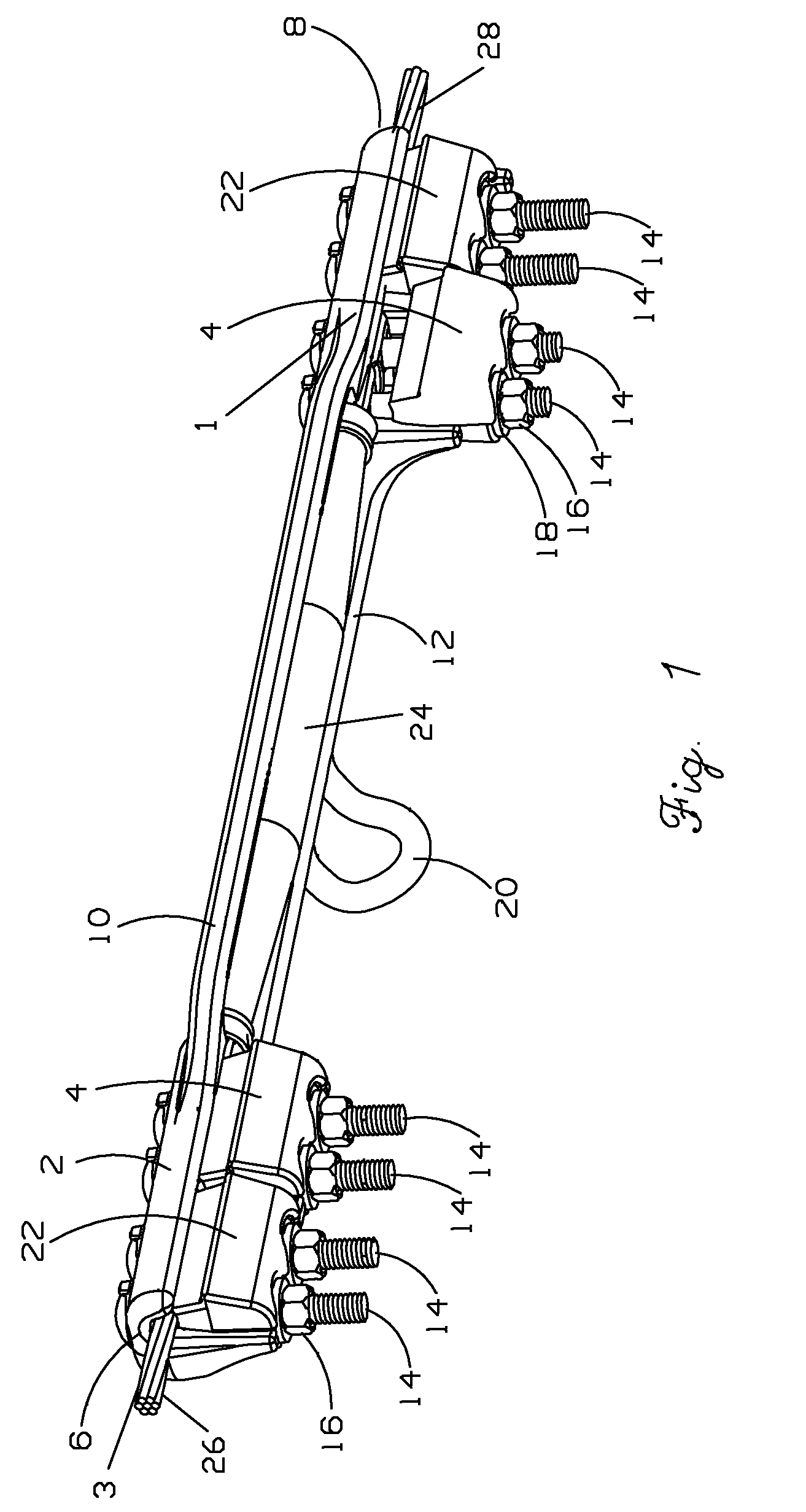Electrical transmission line repair device
a technology for transmission lines and repair devices, applied in the direction of line/current collector details, connection contact materials, connections effected by permanent deformation, etc., can solve the problems of aluminum connectors that are operated in corrosive environments, aluminum connectors that are operated at elevated thermal levels or improperly installed, and connectors that are beginning to fail at an alarming rate, etc., to restore the full mechanical integrity of the system easy and readily installed
- Summary
- Abstract
- Description
- Claims
- Application Information
AI Technical Summary
Benefits of technology
Problems solved by technology
Method used
Image
Examples
Embodiment Construction
[0047]The repair or shunt devices described herein can be employed to restore the mechanical and electrical integrity of compromised sections of electrical transmission lines. Such compromised sections of transmission lines can include, but are not limited to, damaged or deteriorated conductors or connectors. Additionally, the devices can be used on connectors and conductors made from a variety of conductive materials, such as aluminum, copper or other metal alloys.
[0048]FIGS. 1, 2 and 4 show one embodiment of an electrical transmission line repair device 1 installed over a compromised section of electrical transmission line 3. In the illustrated example the compromised section is a deteriorated splice 24. Repair device 1 is installed onto the electrical transmission line 3 so that the device is attached to conductors 26 and 28 which extend from splice 24. Once the repair device is installed the splice 24 is nested within the device. When installed, repair device 1 concurrently serv...
PUM
| Property | Measurement | Unit |
|---|---|---|
| temperatures | aaaaa | aaaaa |
| electrically conductive | aaaaa | aaaaa |
| flexible | aaaaa | aaaaa |
Abstract
Description
Claims
Application Information
 Login to View More
Login to View More - R&D
- Intellectual Property
- Life Sciences
- Materials
- Tech Scout
- Unparalleled Data Quality
- Higher Quality Content
- 60% Fewer Hallucinations
Browse by: Latest US Patents, China's latest patents, Technical Efficacy Thesaurus, Application Domain, Technology Topic, Popular Technical Reports.
© 2025 PatSnap. All rights reserved.Legal|Privacy policy|Modern Slavery Act Transparency Statement|Sitemap|About US| Contact US: help@patsnap.com



